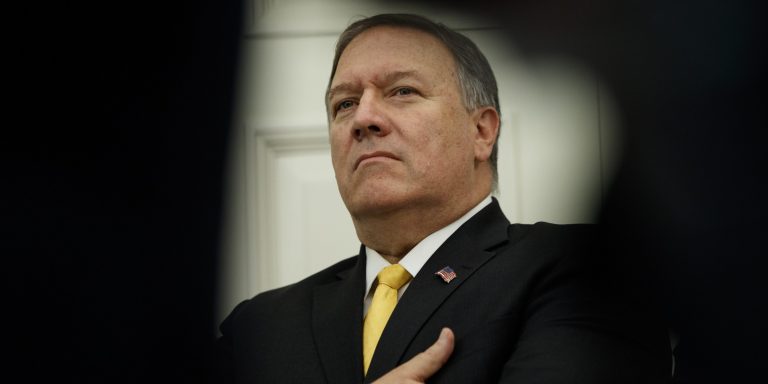INTELBRIEF
February 10, 2020
IntelBrief: U.S. Struggles to Formulate Central America Policy Amidst Destabilization

- Central America is among the most dangerous regions in the world, with a mixture of political corruption, powerful criminal groups, and high-murder rates.
- Violence and femicide against women are particularly prevalent; a woman in El Salvador was murdered on average every three days in 2019, with few cases ever being solved.
- The violence generated by drug trafficking gangs has led thousands of civilians to flee their countries, complicating migration patterns and flows of asylum seekers.
- The lack of U.S. diplomatic leadership, restrictive immigration policies, and 2019 elimination of U.S. foreign assistance to the region has only exacerbated the situation.
.
Law enforcement authorities recently discovered the longest smuggling tunnel ever identified, stretching from Tijuana, on the northern Mexico border nearly three-quarters of a mile across the border toward San Diego, California. The discovery represents a success for U.S. security officials but shows the lengths that the drug cartels will go to evade border regulations and reach the lucrative American market. Throughout Mexico and across Central America, violent drug trafficking organizations and criminal cartels benefit from poor governance, weak rule of law, and high levels of corruption. Many of the cartels are well known—the Sinaloa Cartel, the Gulf Cartel and Los Zetas—and have a reach extending from Latin American countries like Colombia and Peru all the way up to the U.S.-Mexico border. The violence generated by these organizations has led thousands of civilians to flee their countries, further complicating migration patterns and flows of asylum seekers. Drug trafficking organizations in the region largely operate with impunity. They manage local groups to smuggle narcotics, while relying on coercion and bribery to influence police, mayors, and high-profile politicians and business elites.
In Mexico, 2019 was the deadliest year ever recorded, with nearly 35,000 victims of intentional homicide. Several factors have contributed to the increase, including groups battling for control of trafficking routes and access to the lucrative fentanyl market in the United States. Meanwhile, President Andres Manuel Lopez has pursued a strategy of ‘abrazos no balazos’ (hugs not bullets), which promotes a less securitized response to combating the cartels. In October, after Mexican security forces arrested the son of Joaquin ‘El Chapo’ Guzman, cartels besieged the city of Culican, forcing his release. The current situation suggests the president’s strategy has not been successful. Further south in El Salvador, the capital of San Salvador is a patchwork of territory controlled by the two most powerful criminal groups – M-18 and MS-13. Citizens living within areas controlled by the gangs are often unable to move safely between their areas of control without fear of retribution. It is estimated that there are 65,000 active gang members in the country and another 400,000-500,000 individuals that are associated with the gangs, which make money through extortion, drug trafficking, and armed robbery. Murders and disappearances are normal occurrences. Violence and femicide against women are particularly prevalent. A woman in El Salvador was murdered on average every three days in 2019, and prosecutors opened investigations into 148 cases of femicides last year, although very few cases are solved. A recent report by Human Rights Watch detailed how hundreds of people deported from the United States to El Salvador have been killed or abused, including sexual assault and torture.
In Guatemala, though criminal gangs exercise less territorial control than in neighboring El Salvador, the country remains highly dangerous. The border area with Mexico is particularly unsafe because Guatemalan and Mexican cartels battle for control of territory. Meanwhile, in Guatemala City there is concern that the end of a United Nations corruption investigation—the International Commission against Impunity in Guatemala (CICIG), widely seen as clamping down on the prevalence of criminal gangs and their connections with the government—will lead to an increase in violence. In Honduras, the president has been implicated in a corruption scheme as his brother was convicted on drug conspiracy charges in a high-profile case that revealed the connection between the country’s drug traffickers and politically connected powerbrokers. The trial also revealed how drug gangs in Honduras used their profits to influence the country’s presidential elections. The security situation deteriorated so intensely that the U.S. State Department issued an alert last June that rampant gang activity, including extortion, violent street crime, rape, and trafficking were all common occurrences.
Central America is a region awash in weapons from the legacy of civil wars and insurgencies. State capacity remains limited to address human security issues. An immediate effect of the violence has been the influx of forced migration toward the U.S. border. Villages throughout the region have become veritable ghost towns as people flee cartel and criminal gang violence. The lack of U.S. political leadership and development aid in the region has only exacerbated the situation. The State Department recently missed a December 18, 2019 deadline to provide Congress with requested information about the Trump administration’s cuts to foreign assistance to Central America last year. In March 2019, the Trump administration eliminated $405 million of fiscal 2018 funds to the Northern Triangle countries—Honduras, Guatemala, and El Salvador— and has frozen future assistance. The human security of Central America does not look bright; a combination of increasing political corruption, drug trafficking, and cascading violence, alongside an ever restrictive, inhumane, and demoralizing U.S. immigration policy and a dramatic halt in U.S. development aid means the same disastrous security trends witnessed over the last year are likely to continue in 2020 and beyond.
.
For tailored research and analysis, please contact: info@thesoufancenter.org